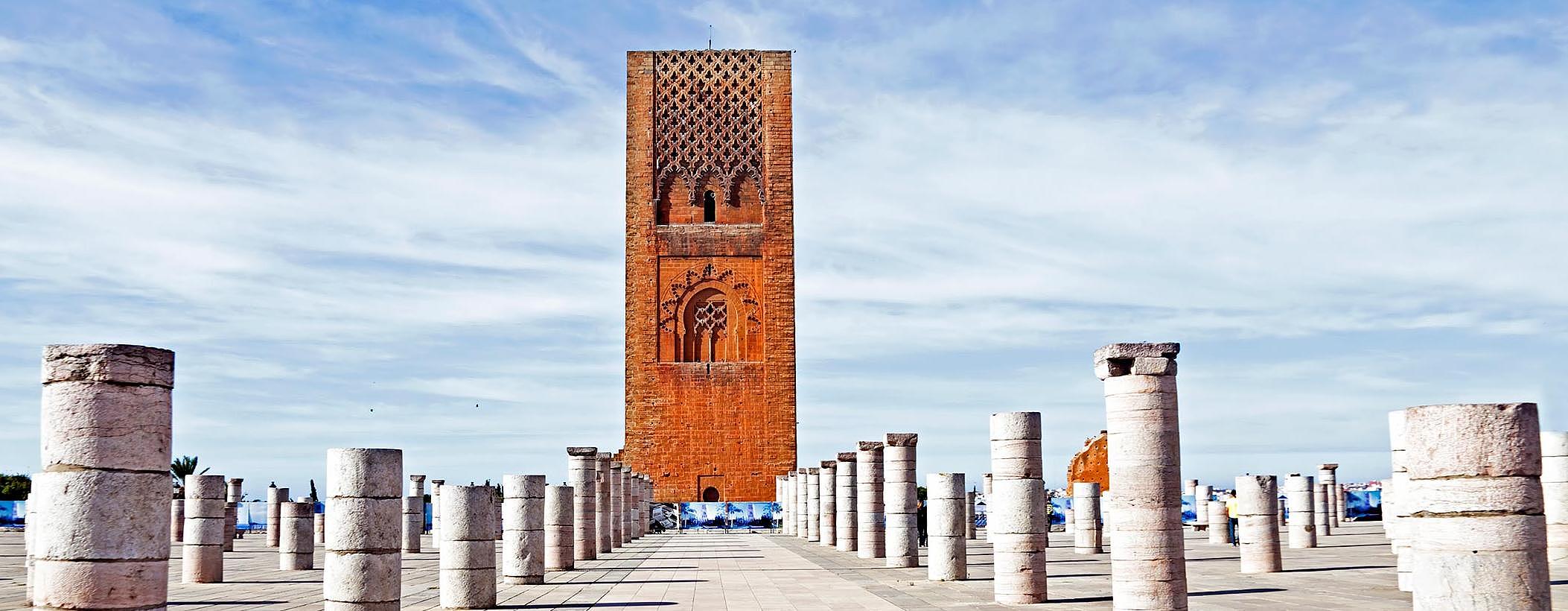What to see in Rabat, the capital of Morocco

History and present day
Rabat is located on the Atlantic coast, at the mouth of the Bou Regreg River. On the opposite bank of the river lies the city of Salé, which is considered a residential neighbourhood of the capital. The two cities form a metropolis of more than 1.5 million inhabitants which is constantly growing. Both Rabat and Salé are monumental, historic cities.
Rabat was founded in the 12th century as a base for fighting against the Spanish. In the 17th century it was converted into a bastion for Muslims driven out of Spain.
In 1912, Marshal Lyautey chose Rabat to be capital of the French Protectorate of Morocco due to its geographic location, and in 1956, after Morocco gained independence, the city became the country’s capital.
Rabat has a rich cultural scene with various museums, festivals and the famous Sidi Abdellah ben Hassoun Museum.
It is also a modern administrative capital and important destination for tourism and business. Its coastal location adds to its appeal, with good beaches nearby, and it also offers water sports, golf and horse-riding opportunities.
Getting to Rabat
Rabat is well served by train, with regular connections to all major cities. Marrakesh is four hours away, Fez 2.5 hours and Casablanca 1 hour. There are two train stations - Gare Rabat Ville and Agdal. It has a tram system and a taxi rank located just next to the city’s train station.
There is also the Rabat International Airport in the nearby city of Salé. It is a small airport and does not offer many connections yet, but has plans to expand to alleviate traffic to Fez, Marrakesh and Casablanca.
What to see in Rabat?
Rabat is a very urban imperial and tourist city with a mild climate, making it pleasant to stroll around. It also boasts a wide selection of hotels.
The Medina.
Rabat’s medina is located on the coast and is spacious, clean and full of friendly locals. It is encircled by walls built by the Andalusians driven from Spain in the 17th century and has six gates.
The most important of these is the Bab Bouiba, which provides access to Souika Street and the Mausoleum of Mohammed V., Bab Chellah, which is the nearest gate to the centre, a taxi rank, and the Jemaa Kebir Mosque.
The main street is Souika Street, a place full of crafts shops, where you can find the Moulay Sliman Mosque and Jemaa Kebir Mosque, the great mosque.
Stroll down Rue des Consuls, with its elegant glass roof, where the old houses of the foreign representatives were located. Today it is full of vendors selling exotic rugs.
Next to the medina is the Kasbah of the Udayas, with an imposing gate and an interior full of narrow streets, white and indigo houses and an Andalusian garden with the famous fountain of fortune. It is also home to the Moroccan Art Museum.
The Hassan Tower Esplanade.
This is an esplanade next to the river where the ruins of an ancient Almohad mosque from the 12th century are located. Particularly noteworthy is the Hassan Tower, with a height of 44 meters and surrounded by a total of 200 columns.
Opposite the tower is the beautifully decorated Mausoleum of Mohammed V - Hassan II, where worshipers recite the Quran day and night.
The Almohad Walls.
The Almohad Walls in Rabat partially encircle the city and were built in the 12th century when the Almohads designed the capital. It has five gates and a modern art gallery inside.
The Chellah Necropolis.
This is an ancient Roman city rebuilt in the 13th century by the Almohads as a necropolis. There are roman ruins such as the market, a forum, fountains and a curia building, which is the best conserved building of them all.
The Muslim part is made up of the Merinid Necropolis, ruins of the mosque, the zaouia and the fountain of canons. Many people visit this fountain to see the eels that live in it, which are said to have the power to cure sterility.
The modern area.
With wide streets and big office buildings, along with many modernist buildings from the French protectorate era, the main street - Mohammed V Avenue, deserves a special mention.
Here, you'll find the 19th century Royal Palace, located on an enormous site surrounded by walls with seven gates and majestic gardens.
The most lively and commercial area is Hassan II Avenue.
Shopping in Rabat
For shopaholics, Rabat is a production centre of Moroccan crafts. There are numerous crafts shops. The rugs from Rabat are very famous, but ceramics, embroidered fabrics, exotic jewellery and tinplate work are also worth a look. In the neighbouring city of Salé, the ceramics it has on offer are particularly well-known, but there are also baskets, natural reed mats and dyed Raffia, wool blankets, inlaid wooden items and tapestries.
The best area for shopping is the medina, with all kinds of businesses and shops, where you can check out and buy local crafts.